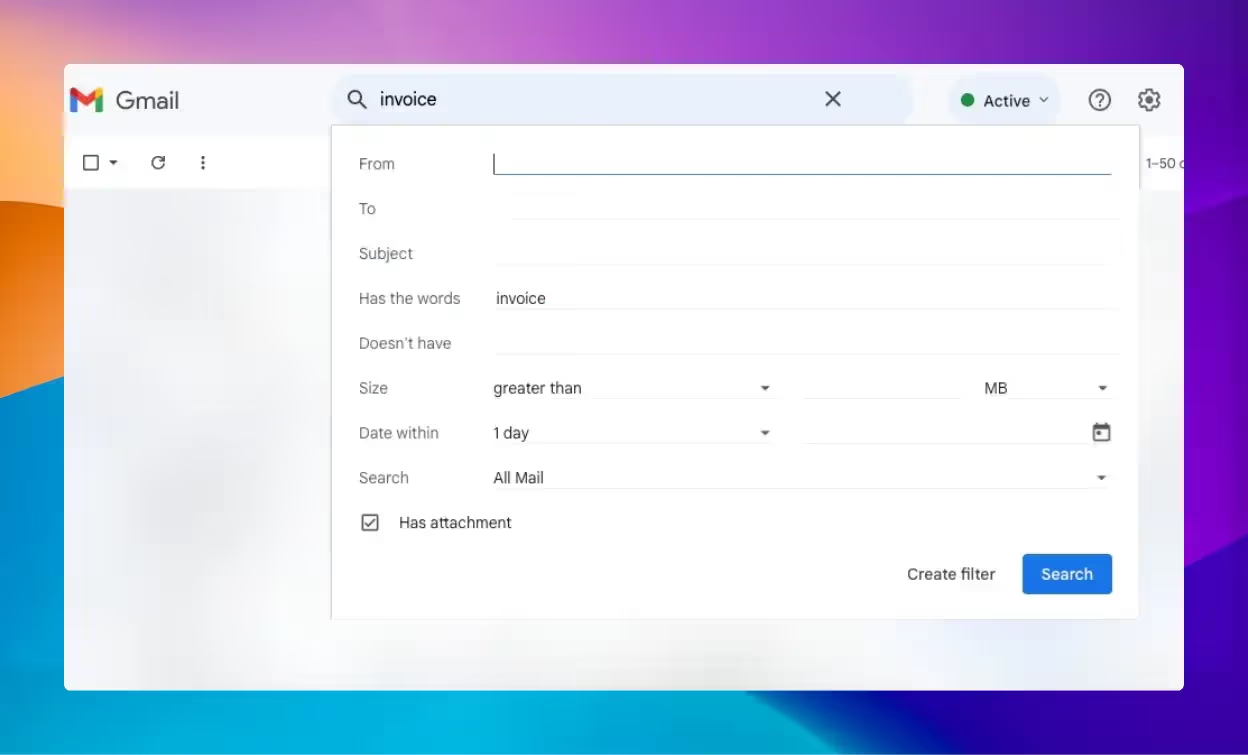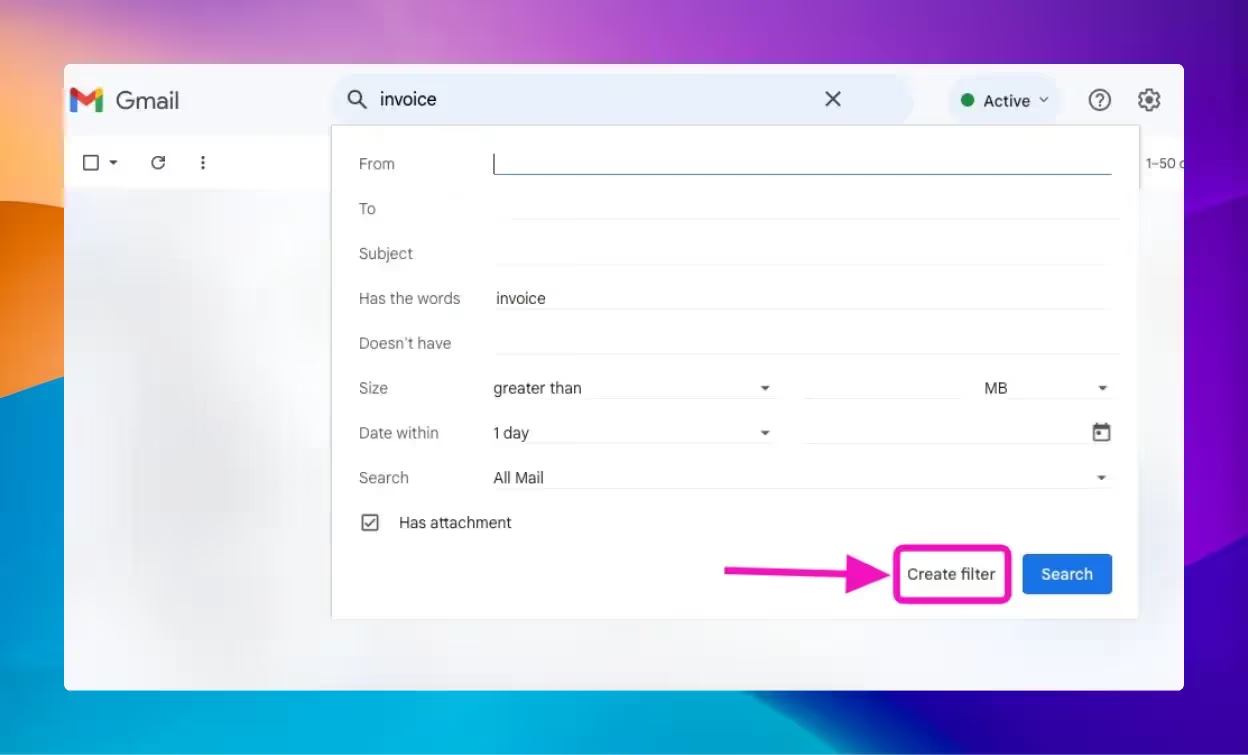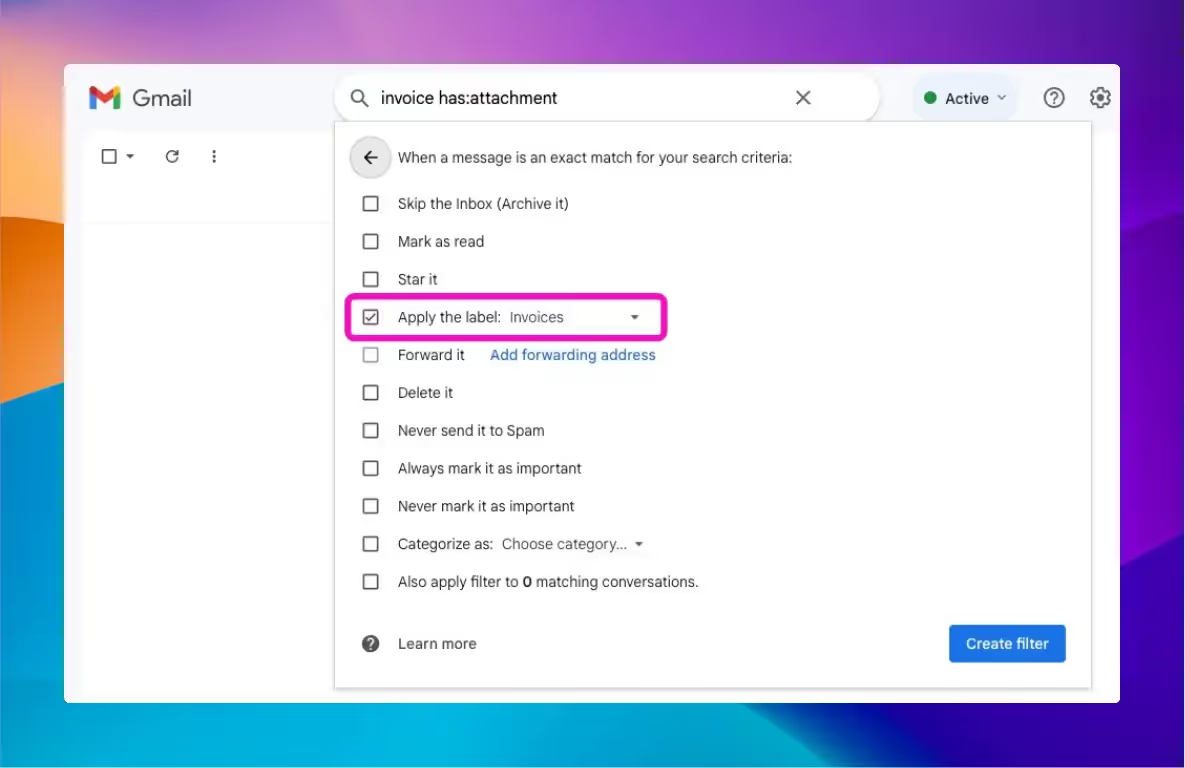Disorganized inboxes in Gmail can scatter essential project information and disrupt workflows, making it difficult for teams to stay efficient and productive. Organizing your team’s inboxes is key to boosting productivity and maintaining a smooth workflow.
However, sorting through emails and organizing them manually can be tedious. Learning how to label incoming emails in Gmail can streamline this process, creating an organized inbox without all the extra work. Additionally, using email filters can automatically sort emails into designated folders, further enhancing inbox management.
Introduction to Gmail Labels
Gmail labels are a powerful tool for organizing and managing emails more effectively. Labels act as tags that can be applied to emails to categorize them, making it easier to find and prioritize messages. Unlike traditional folders, Gmail labels offer a flexible and customizable approach to keeping your inbox tidy and clutter-free.
Ready to take control of your inbox? Try Gmelius today and streamline your email workflow!
What are Gmail labels?
Gmail labels are used to categorize and organize your emails. While they function like folders, labels are more versatile and adaptable. They allow you to group related messages together, making them easier to locate and manage. Unlike folders, multiple labels can be applied to a single email, meaning you can tag an email with labels such as “Work,” “Project A,” and “Urgent.” This way, the email is accessible under any of those categories, providing a more dynamic way to manage your inbox.
Benefits of using labels in Gmail
Using labels in Gmail offers several advantages:
- Organized Inbox: Labels keep your inbox organized, making it easier to find specific messages and reducing the clutter that can cause stress and overwhelm.
- Prioritization: Labels help you prioritize messages by categorizing them, allowing you to focus on important emails first. You can quickly identify which emails require immediate action and which can wait.
- Flexibility: Unlike folders, labels provide the flexibility to tag emails under multiple categories, giving you more options for organization and retrieval.
Creating and managing labels in Gmail
Creating and managing labels in Gmail is a simple process that can greatly improve email organization. Here’s how to do it:
Creating Gmail labels
To create a new label in Gmail, follow these steps:
- Log in to your Gmail account and click on the gear icon in the upper right corner.
- Select “See all settings” from the dropdown menu.
- Go to the “Labels” tab.
- Click on the “Create new label” button.
- Enter the name of your new label and click “Create.”
Alternatively, you can create a new label directly from your Gmail inbox by clicking on the “More” menu on the left sidebar and select “Create new label.”
You can also use the Gmail search bar to create a new label. Type the desired label name into the search bar, and Gmail will prompt you to create a new label if it doesn’t already exist.
Once a label is created, you can apply it to individual messages or set up filters to automatically label incoming emails. Filters can be configured based on specific criteria such as the sender, subject, or keywords, which helps to automatically categorize emails and keep your inbox organized.
By using Gmail labels and filters effectively, you can transform a cluttered inbox into a well-organized, efficient workspace that supports productivity and reduces stress.
How to automatically label emails in Gmail
Now that we've seen what are Gmail labels and how to create them, let's focus on how to automatically label emails in Gmail. Implementing such automations will make a huge impact on your team’s workflow collaboration and your daily email management.
Here are the steps to automatically add labels to your email conversations:
Open Gmail and start searching for a kind of email conversations you wish to automate. For instance, suppose you wish to automatically label all emails that contain the word "invoice" and have an attachment.

Click on "Create Filter" at the bottom of the search modal.

Pick "Apply the label" and choose a label from the ones you've previously created, e.g., "Invoices".

Click on "Create Filter" at the bottom right of the search modal.

And voilà! Now, all your incoming emails that match the criteria you've set above will automatically have a specific Gmail label.
Automate Labeling with Tools Outside Gmail
Labeling is important in Gmail, but it can quickly take a lot of time and effort to scale such automations manually. While users can label tasks using native Gmail functions, additional automation tools offer more efficient, user-friendly ways to automate a larger spectrum of processes and operations so you can focus on more critical tasks and better manage your Gmail conversations.
If you’re looking for a tool that will automatically label emails in Gmail, there are a few things you should consider:
Versatility
Automation should ‘autopilot’ your busy work to boost your team’s productivity in the most efficient way possible for all Gmail users. As a result, automation tools for Gmail must be versatile. The level of automation should support both individual and shared inboxes.
Customization
Automation reduces manual actions by using a predetermined set of rules to sort information. Setting automation rules can get complicated and is often time-consuming for teams, but it ensures that emails are automatically labeled based on specific criteria.
With Gmelius, we use an intuitive“If this–then that” logic that allows team members to base automations on cause-and-effect clauses. For example, if this user sends an email, then it needs to be labeled with a specific project name.
Such automation rules allow team members to add labels based on a set of parameters. Instead of going through each email to determine which ones fit your guidelines, setting “if this–then that” automation rules can complete the same actions in a fraction of the time it takes humans.
Time-based service-level agreement rules
Teams often automate with service-level agreement (SLA) rules so emails never go unanswered or receive a response too late.
Setting this type of automation rule keeps client contracts in line without the added stress for account managers, ensuring that the primary inbox remains organized and clutter-free.
With time-based SLA rule automation, teams can label multiple email conversations simultaneously, enabling you to meet every aspect of your client agreement with short response times and quality customer service.
AI email sorting
AI tagging transforms standard Gmail labeling into a high-efficiency engine by automatically analyzing the content of incoming conversations to apply relevant tags without manual intervention.
Rather than relying on simple keyword matches, these assistants operate across both personal and shared inboxes, intelligently selecting from hundreds of pre-defined categories or custom tags with unique descriptions tailored to your specific workflow.
This process goes beyond mere organization; once a tag is applied, it can serve as a catalyst to trigger automation rules (such as instantly assigning a task to a specific teammate) while simultaneously feeding into enhanced analytics that help you identify bottlenecks and track response times based on specific labels.
Use Cases: Label Automation in Action
When learning how to automatically label emails in Gmail, sometimes it’s helpful to examine use cases and apply them to your own scenario. Here are a few examples of teams that use workflow automation with Gmelius. These teams leverage the Gmail auto label feature to streamline their email management processes. Gmelius has all the features and integrations mentioned above — and more — to enrich your team’s efficacy.
Legal Teams

Within the world of law, communication is critical. Gmail can help keep tabs on cases, record billable hours, and communicate with clients. If you are not using Gmail to its full potential, disorganization can interrupt communication and damage your cases and your performance.
By creating Gmail labels for legal cases or clients, legal teams can significantly improve internal communications and case management. They can further automate the application of these labels based on the sender's email, e.g., a client. Finally, they can share these Gmail labels within the firm with paralegals, associates or partners using an email collaboration solution such as Gmelius.
Technology and customer support

The technology industry has become deeply integrated with many virtual workplaces in the last few years. With this transition, online communication has become increasingly important within the tech industry. Many technical workers no longer sit next to co-workers in face-to-face settings, so quick questions may not be an option.
Gmail labeling can help identify specific tasks and assignments, eliminating the need for additional questions.
Many IT companies use a hierarchical tier system, which can benefit both information technology and customer support. A tier system sends tasks as emails to a team on tier one. Tasks get escalated or delegated to the proper tier based on the urgency or complexity of the task or request.
Learning how to automatically label emails in Gmail can be beneficial for tier systems, as automatically adding an “urgent” label to time-sensitive tasks can prevent teams from breaching SLAs. For example, if an email comes in with the subject, “Computer screen won’t turn on,” you can set an automation rule so that if a task contains the word “screen,” then it is labeled as “tier 2.” Teams on tier 2 know their responsibility is to work on “tier 2” tasks.
Once the labeling/tiering system is in place, an organization can go further by automating the workload distribution based on labels and monitoring any SLA policy they wish to enforce thanks to Gmelius.
Sales

Sales teams bank on communication with potential clients, whether through phone calls or email. Sales teams often need to save emails from potential customers for later review. Encouraging customers from the initial research.
stage toward conversion could take months or even years. In these cases, potential customers often need more time to progress along the sales funnel. To provide potential buyers the time they need to decide without losing a possible lead, sales teams can use automation rules that move these emails into a “contact later” label.
Gmelius simplifies this action with shared Gmail labels, so everyone on your team can view potential prospects, increasing potential sales.
Higher education

In an effort to accommodate students who cannot attend school in person, Boise State University in Boise, Idaho, offers the opportunity to earn online degrees. This option has grown in popularity among other universities across the country, particularly during the COVID-19 pandemic.
Online communication can be difficult, especially for students who already use several other digital messaging channels. Fortunately, Boise State department heads recognized this challenge early on and placed communication and collaboration at the top of their list of issues to tackle.
Shared Gmail labels and workflow automation rules from Gmelius help university administrators support multiple programs by organizing emails, streamlining workflows, and ensuring the correct contact person promptly receives the proper task or request
Admissions officers use shared Gmail labels to keep track of applicants who need to send additional documents to complete their applications. Individual colleges can use the same functionality to track different department and committee communications, and follow up later on assigned action items.
Professors can use shared Gmail labels to sort incoming student assignments into different classes, create shared inboxes for collaborative graduate seminars, and keep everything separate from messages to and from shared inboxes for various research committees. Student advisors have an easier time keeping track of individual student requests and special needs (or homework assignments) when they use shared labels and add specific context with email notes.
Using Gmelius has streamlined distance learning at Boise State for students, professors, and staff across the board.
Also Read: How to Configure Email Labels in 5 Easy Steps
Gmelius: The Workflow You Deserve
When learning how to automatically label emails in Gmail, it's important to use a comprehensive automation tool. Gmelius offers all the aforementioned automation features — and more — so your team only needs one tool to increase collaboration and productivity. Whether you work in customer support, sales, law, or higher education, Gmelius' automation and labelling functions can help your team succeed in countless ways!
Learn how to automatically label emails in Gmail with Gmelius. Ready to get started? Sign up today!
FAQs
1. What are Gmail labels and how do they work?
Gmail labels are customizable tags that help you organize your emails. Unlike folders, multiple labels can be applied to a single email, so you can group messages by topic, project, sender, or priority—making them easier to find and manage.
2. Can I automatically label incoming emails in Gmail?
Yes. You can set up Gmail filters to automatically label incoming emails based on specific criteria like sender, subject line, or keywords. This helps keep your inbox organized without having to manually sort messages.
3. How do I create a filter to auto-label emails in Gmail?
Use Gmail’s search bar to define the kind of emails you want to filter. Click “Create filter,” then select “Apply the label” and choose or create a label. Gmail will then automatically label future emails that match your criteria.
4. What’s the difference between Gmail labels and folders?
Folders store emails in a single location, but Gmail labels allow you to categorize one email in multiple ways. This gives you more flexibility when organizing and retrieving messages across different projects or teams.
5. Can I label emails based on attachments or keywords?
Yes. Gmail filters can apply labels to emails that contain specific keywords (like “invoice”) or include attachments. Just use the advanced search options when setting up your filter.
6. Is there a way to label emails outside of Gmail’s built-in tools?
Yes. Third-party tools offer more powerful automation for labeling, especially at scale or across shared inboxes. These tools allow for rule-based workflows, “if-this-then-that” logic, SLA tracking, and more dynamic labeling options.
7. Why should I automate email labeling in Gmail?
Automatic labeling saves time, reduces clutter, ensures consistent organization, and helps teams prioritize important emails. It’s especially useful in environments with high email volume or collaborative workflows.
8. What are common use cases for automatic email labeling?
Legal teams label emails by client or case, support teams by issue tier, sales teams by deal stage, and universities by department or applicant status. Automatic labeling supports smoother workflows across all industries.
9. Can labels be shared with others on my team?
Not with native Gmail, but some external tools allow for shared labels, so multiple people can access, update, and organize emails under the same categories. This is useful for project collaboration or managing team inboxes.
10. Can I set up time-based rules for labeling emails?
Not with Gmail alone, but external tools can add time-based automation, such as labeling unanswered emails after a set period to meet SLAs or flag follow-ups. This helps keep service teams on track and responsive.



.avif)
.avif)


.avif)
.avif)